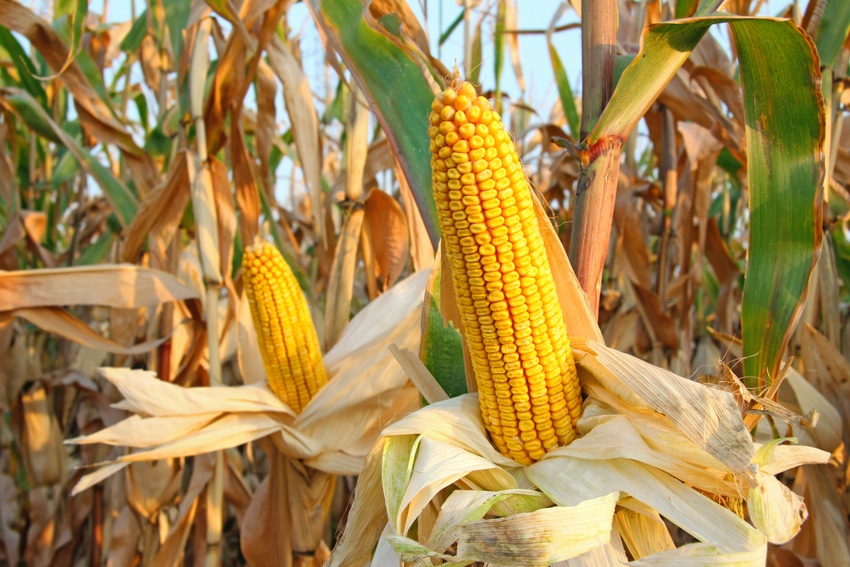
Most crop experts are now agreeing that Minnesota’s 2018 crop yields are likely to be highly variable across the State, especially for corn yields. In the USDA Crop Report on Aug. 10, the 2018 Minnesota corn yield was projected at 191 bushels per acre, which would be the third highest ever, trailing only last year’s record yield of 194 bushels per acre, and the previous record yield of 193 bushels per acre in 2016. Other recent statewide average corn yields are 188 bushels per acre in 2015, 158 bushels per acre in 2014, and 160 bushels per acre in 2013.
Interestingly, there has been quite a range in the estimated 2018 Minnesota corn yields by private analysts, ranging from about 178 to near 190 bushels per acre; however, all of the estimates are below the August USDA estimate. Many analysts feel that USDA may be overestimating the 2018 corn yield in Minnesota, due to the growing season weather challenges in some of prime corn-producing areas of the state. Historically, Minnesota final average corn yields tend to decline a bit as harvest goes on, due to average corn yields in central and northern being lower than anticipated; however, that trend changed somewhat in 2016 and 2017 with some very favorable weather late in the growing season.
The USDA weekly crop progress report on Sept. 4 listed 75 percent of Minnesota’s corn crop as good-to-excellent. Many of the areas that have a corn crop rated good-to-excellent are in central and northern Minnesota, along with southeast Minnesota. USDA listed only 7 percent of the state’s corn crop as poor to very poor, with most of those acres in portions of southwest and south-central Minnesota, due to a variety of weather challenges during the growing season. In both 2016 and 2017, most counties in southern Minnesota had corn yields above 190 bushels per acre, with may counties exceeding 200 bushels per acre in both years. The southwest and south-central crop reporting districts typically account for over 40 percent of Minnesota’s corn production annually.
The USDA crop report on August 10 projected Iowa to achieve an average corn yield of 202 bushels per acre in 2018, which would match the 2017 statewide corn yield, and would be just shy of the 2016 record yield of 203 bushels per acre. Most private analysts agree that Iowa’s 2018 corn crop should be close to the USDA projections; however, some late-season dry weather concerns in portions of southwest Iowa, along with continual excessive rainfall in other portions of the state, has raised some concerns regarding Iowa’s high corn yield projections.
Statewide corn yields in states such as Illinois, Indiana and Ohio have been up and down in recent years. After achieving record or near-record yields in 2016, corn yields dropped off somewhat in 2017, and are now projected to be quite solid again in 2018. USDA estimated the 2018 corn yield for Illinois at the record level of 207 bushels per acre, Indiana at 186 bushels per acre and Ohio at 180 bushels per acre. Nebraska is also projected to have a record statewide corn yield in 2018 at 196 bushels per acre. Other estimated 2018 corn yields are South Dakota at 170 bushels per acre and North Dakota at 148 bushels per acre, which are up considerably from the drought reduced yields in 2017.
The August 10 USDA report projected a record national average corn yield of 178.4 bushels per acre, which would surpass the previous record U.S. corn yields of 176.6 bushels per acre in 2017 and 174.6 bushels per acre in 2016. Many private analysts feel that the USDA 2018 corn yield estimate may be a bit too high, given the poor early-season growing conditions in portions of the western Corn Belt, along with drought conditions in some areas later in the growing season.
One of the biggest challenges with the Minnesota corn crop is usually getting the crop mature before the first killing frost. Average first frost dates range from around September 20 in the northern areas of the state to around October 15 in southeast Minnesota. The good news is that crop development in many areas of the state are much more advanced in the 2018 crop year, as compared to a normal year. As of September 5, a total of 2,435 growing degree units (GDUs) had been accumulated since May 1 at the University of Minnesota Southern Research and Outreach Center at Waseca, Minn. That level of GDU accumulation is approximately 10 percent above normal, and usually does not occur until September 24 in an average year.
Corn is considered to have reached physiological maturity once it is in the black layer stage. Some of the earlier-planted corn in Minnesota is likely to reach this stage by September 10-15, while later-planted corn may be a week to 10 days later. The concern for an early frost does not appear to be an issue in 2018. Once the corn reaches maturity, favorable early fall weather can greatly assist with natural drydown of the corn in the field, which can reduce corn drying costs.
The U of M Research Center at Waseca received over 7.25 inches of rainfall from August 31 to September 5. The 5.38 inches of rainfall recorded on the morning of September 5 was the fourth highest 24-hour rainfall amount ever recorded at the Waseca location. Fortunately in the Waseca area, the growing season precipitation amounts prior to this period had been very near normal, which is not the case in some other areas of southern Minnesota and northern Iowa.
Many portions of southwest and south-central Minnesota, as well as adjoining areas of northern Iowa, have received record or near-record levels of precipitation during the 2018 growing season. Several locations in these regions have received two to three times the normal rainfall amounts since May 1. This has resulted in continual saturated field conditions and generally poor growing conditions for crop production, which appears to have severely impacted the yield potential of this year’s corn crop. The hardest hit areas are likely to have 2018 corn yields that are 10-20 percent, or more, below the long-term average yields.
Another concern for harvest of this year’s corn and soybean crop could be the extremely wet field conditions that exist in many areas of Minnesota and surrounding states. If the wetter than normal conditions continue through September, the saturated field conditions could lead to some very challenging harvest conditions in some areas. These type of soil conditions are also very favorable for the development of root rot and stalk rot diseases in crops, which could result in more crop lodging, as well as increased harvest losses.
About the Author(s)
You May Also Like






